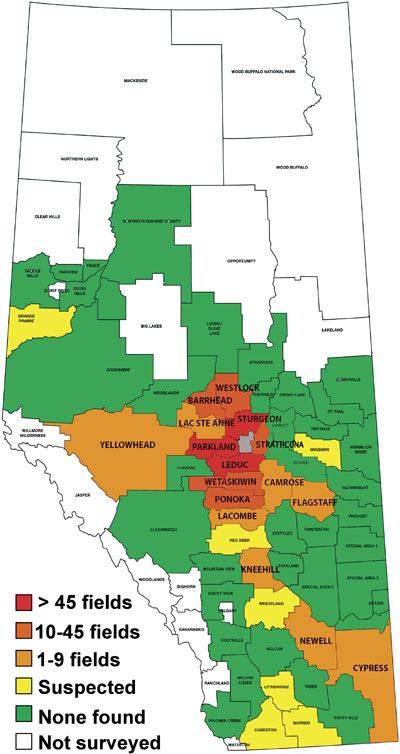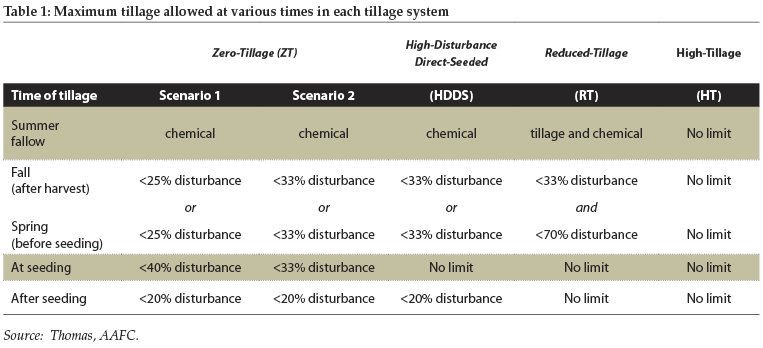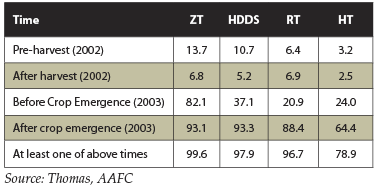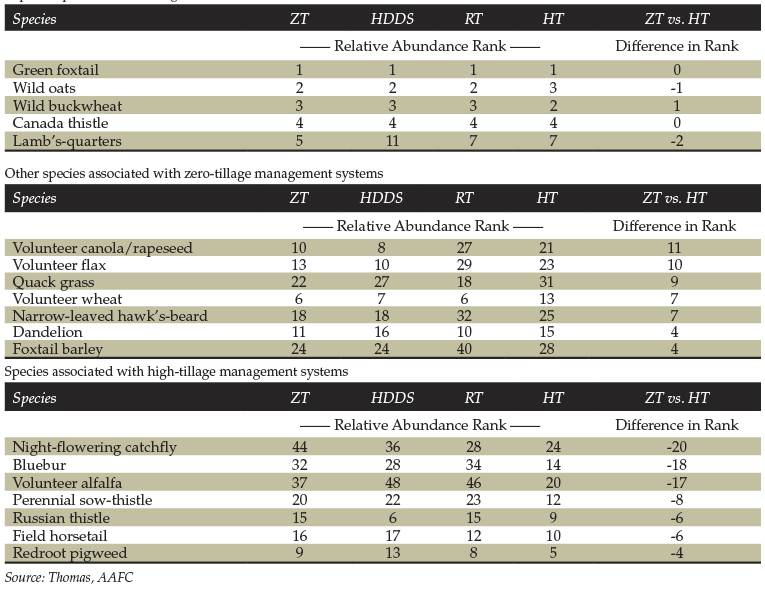
Features
Agronomy
Soybeans
Weed population shows minor changes due to tillage systems
The massive Prairie-wide weed survey conducted earlier this decade continues to provide weed scientists, agronomists and farmers with plenty of information to help fine-tune their weed control programs.
October 22, 2009 By Bruce Barker
The massive Prairie-wide weed survey conducted earlier this decade continues to provide weed scientists, agronomists and farmers with plenty of information to help fine-tune their weed control programs. Research scientist Gord Thomas with Agriculture and Agri-Food Canada in Saskatoon says that surveys filled out by producers and recently analyzed are helping to shine light on how management practices affect weed populations.
 |
|
| Volunteer flax, volunteer canola, volunteer wheat, narrow-leaved hawk’s-beard, foxtail barley, quackgrass and dandelion were more abundant in zero-till. Photo by Bruce Barker. |
“The key thing here is that the survey was conducted in late July and early August, so we looked at the fields after all weed management had taken place, looking at the weeds left over in the system,” explains Thomas.
The weed surveys were co-ordinated by provincial weed specialists, in conjunction with researchers at Agriculture and Agri-Food Canada (AAFC), in 2001 in Alberta, 2002 in Manitoba and 2003 in Saskatchewan.
Looking specifically at Saskatchewan, 2046 fields were surveyed, and 976 fields had management questionnaires completed. The questionnaires allowed Thomas to try to determine trends in weed populations based on tillage type.
Thomas defined four systems, based on soil disturbance, and included Zero-Tillage (ZT), High Disturbance Direct-Seeded (HDDS), Reduced Tillage (RT), and High Tillage (HT).
A field may be classified as belonging to the zero-tillage system if it follows one of two different scenarios, based on the presence or absence of a single low-disturbance fertilizer operation. Fields following both zero-tillage scenarios are grouped in all analyses.
Thomas also looked at the management practices associated with each tillage type. He found that the use of herbicides was related to tillage system. Systems with higher tillage were less likely to use herbicides at each of the
application times.
“The point here is that yes, we defined tillage types according to tillage operations, but there are a whole lot of other things that go along with it that are going to influence weed populations,” explains Thomas. “For example, looking at herbicide use you can see a predominance of pre-harvest in zero-till and trending down as tillage increases. After harvest, I was quite surprised, in 2002, very little herbicide going on in the fall.”
Surprisingly, 21 percent of the high-tillage system did not use herbicides at any time for the 2003 crop. That contrasts with less than one percent of zero-tillage fields that did not receive at least one herbicide application. “High tillage is quite a different group,” says Thomas.
Not much difference in weed densities
Regardless of the tillage system, most producers were able to successfully control their weeds. In all tillage systems, some fields did not have any weeds detected in the surveys. These weed-free fields accounted for at least four percent of the area in each system and seven percent in the ZT system. At least one-quarter of fields in all systems had residual weed densities of less than 3.5 plants per square metre. The median weed density was between seven to 12 plants per square metre. “In many cases, the weed densities we were finding were very low, indicating good weed control,” says Thomas. “So most fields, regardless of tillage system, had quite low weed densities at the time of survey. If there was a difference, it was between ZT and HT, the two extremes where we did find a significant difference.”
However, Thomas points out that if the 21 percent of fields that were not sprayed in HT systems were removed, the median weed density across all four systems had absolutely no difference, suggesting that regardless of which tillage system people are using, all were getting good weed management.
A few differences in species
Looking at the Relative Abundance Index (RAI), a measure of frequency, uniformity and density, Thomas points out that there was no difference in the top five rankings between tillage systems, including the top three most abundant species: green foxtail, wild oat and wild buckwheat Thomas did observe that some weed species seem to be associated with ZT. Volunteer flax, volunteer canola, volunteer wheat, narrow-leaved hawk’s-beard, foxtail barley, quackgrass and dandelion were more abundant in ZT compared to HT. “None of these are too surprising in terms of the common weeds. What might be surprising is that we have three volunteer crops among them,” says Thomas.
Thomas explains that the abundance of the volunteer crops as weeds in the ZT system is likely more related to the rotations ZT systems, rather than to the tillage itself. For example, canola and flax are more common in ZT rotations than HT rotations.
Conversely, the weed species more abundant under HT include redroot pigweed, field horsetail, Russian thistle, perennial sow-thistle, volunteer alfalfa, bluebur and night-flowering catchfly. Thomas could not find any particular reason for these species being more abundant under HT, as they include a combination of winter annuals, spring annuals and perennials. “Tillage is only part of the entire management system, that’s obvious, which influences the weed population. We tried to relate tillage directly to weeds, but that has proven difficult,” explains Thomas. “Zero-till producers tend to follow more diverse rotations, and that leads to the problems of V crops, and there are a few weeds that need to be watched in zero-till fields, and they include hawk’s-beard, foxtail barley, quackgrass and dandelion.


